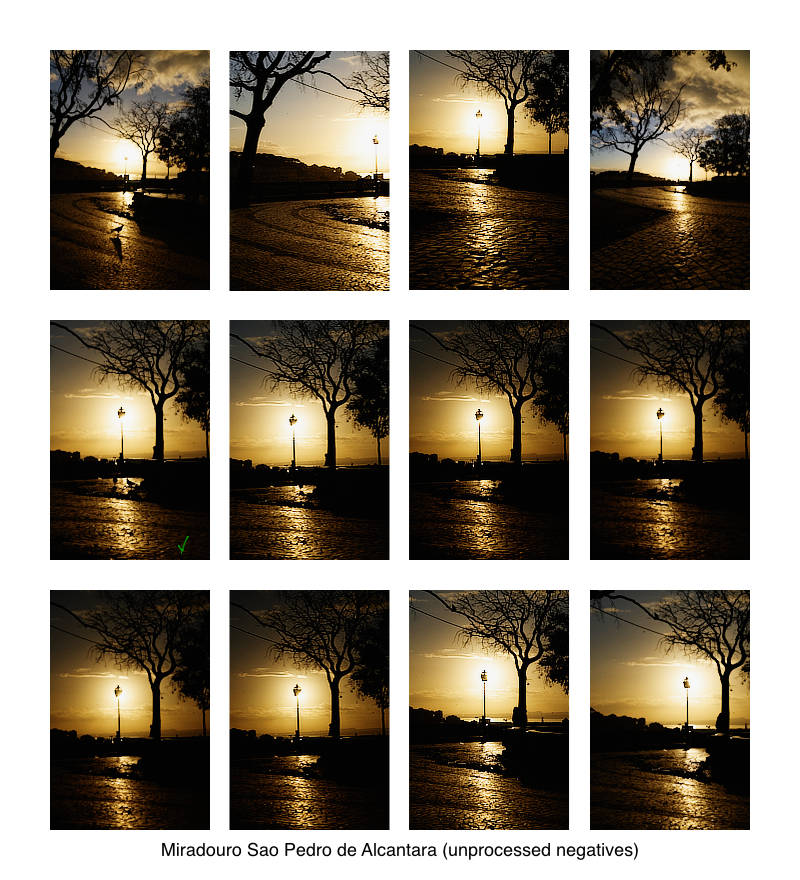Issue 18
Look in the Opposite Direction
In the Spotlight

I arrived at Miradouro Sao Pedro de Alcantara to experience what promised to be a beautiful Lisbon sunrise and take a few ‘Instagram’ snaps. While I don’t shoot many of the latter—preferring to explore the rich texture of life through its paradoxical nature — I certainly enjoy a beautiful view.
By the time the sun was peeking over the horizon, there were a handful of us, perhaps seven, chatting amicably and exchanging travel tips for the day ahead. There was another reason I came to Miradouro: to see if I could capture the quiet moments of people enjoying the sunrise—and this was a spectacular one!
Erwitt observed that he would follow the crowd for a while and then go in the opposite direction. I did just that, resulting in the sequence of images I am spotlighting today.
Everything lined up beautifully for this series: the sun, the lamppost, and the couple enjoying an early morning stroll where I stood moments before.
To make this image work, I crouched down using aperture priority and exposure compensation techniques (i.e., manual ISO, underexposure, and, if needed, filters). This allowed me to use the lamppost as a flag to shield the light while capturing the leading line of the sun reflecting off the cobblestones.
I disagree with the purist view that one should only photograph in manual mode—it only works if you are photographing flowers, quiet landscapes, or portraits. In a dynamic scene, you do not have the luxury of fiddling with manual camera settings—I know because I photographed [birds and wildlife](https://johandupreez.com/black-cotton/) for decades. The problem compounds when you are faced with difficult light, e.g., high contrast light, evening light, or the blue hour.
One or two Quotes
1.
After following the crowd for a while, I'd then go 180 degrees in the exact opposite direction. It always worked for me, but then again, I'm very lucky."
Elliott Erwitt Tweet
Steuli’s approach is very different from Erwitt’s,
2.
I like to be flexible in the way I take pictures. I do not use a tripod, and I move around in the crowd, of which I am myself part.... I try to preserve the dynamics of the street, and my way of using the camera tries to approximate as much as possible the way we see: focusing on details, opening up to wider angles, and composing all these very short, fragmented impressions into a larger mental picture.
Beat Streuli Tweet
3 Ideas for the Creative Mind
1.
I follow the crowd, not to photograph the same sights or events they are enjoying, but to find vignettes that reveal the rich textures of life.
2.
The human eye focuses on segments of, or details in, the broader scene: the rest is a blur. This means the whole vignette does not have to be in focus and tack sharp, but your compositions—what you include and exclude from the frame—must be spot on.
3.
You need a keen eye to consider the chaos before you and simple tools to capture it. After a while, making images comes instinctively, borne out of practice and 10,000 failures. Be deliberate with the former and study the latter.
That’s it – thanks for reading! As always, please feel free to hit reply and exchange your thoughts or to just say “hi”.